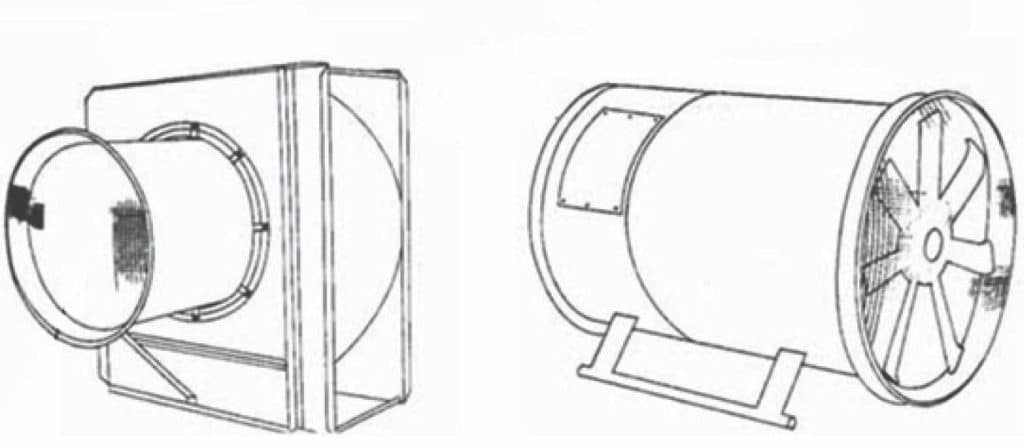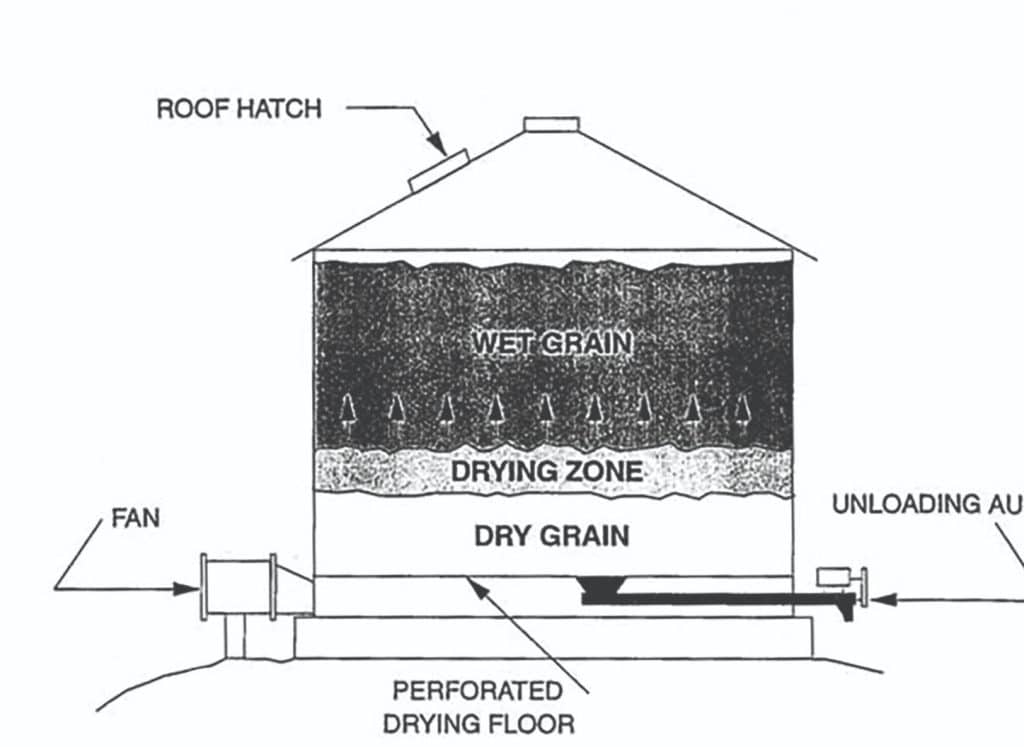Estimated reading time: 7 minutes
When grain is harvested it is in the best condition it will ever be. From harvesting onwards, it can only go into worse condition. Drying is the solution to increased storage life of harvested grain.
Moisture content should be reduced by about one percentage point for grain that has low quality at time of storage. The longer we wish to store grain, the more important it is to get the grain to a moisture level that will prevent spoilage.
Drying involves driving out the moisture trapped inside the ‘seed coat’ or skin. Moisture can migrate in both directions. Over-drying or drying grain too quickly will cause stress cracks in the seed coat. These cracks can lead to broken kernels. Cracks can also lead to easier access for moulds and insects to the seed interior.
There are four different types of drying:
Aeration: While not a form of drying, it is essential to the drying process. It simply entails forcing air through the grain mass to maintain condition.
Natural air drying: This entails the use of outside ambient air without the addition of heat.
Mechanical dryers: These include the screen type, tower dryers, etc.
In-bin or in-silo drying.
Importance of airflow
Airflow is the amount of air passing through the grain mass. It is a volume of air crossing a volume of grain at a given time. Airflow is usually measured in cubic feet per minute per bushel or cubic metres per minute of air per cubic meter of grain.
Airflow requirements will depend on silo usage. Aeration can run from 0,10cfm/bu (0,08cu m/cu m/min) in large commercial silos to 4cfm/bu (3,2 cu m/cu m/min) in natural air drying.
Airflow is dependent on the ‘static pressure’ of the grain. Air travelling in the voids between kernels of grain will lose energy due to friction and turbulence. This energy drop or pressure drop is regarded as static pressure. In general, the taller the silo and the smaller the grain kernel, the greater the static pressure.
Role of fans
Fans are important because they force air through the grain mass. There are two basic types of fans namely axial flow fans and centrifugal fans (Figure 1).
Axial fans produce more air flow at lower static pressures than centrifugal fans. Centrifugal fans work better at higher static pressures and are much quieter than axial fans. Fans can work with either forced air or suction. We only recommend forced air systems in silos as suction systems can cause damage.
Natural air drying
Natural air drying is a process used to dry grain by forcing unheated air through the grain mass until the grain reaches equilibrium moisture with the outside air. Drying with natural air can only be accomplished if the air temperature and relative humidity conditions allow a net moisture transfer from the grain to the air.
Generally, natural air drying requires large volumes of air and long periods of time. Natural air drying is not a process that will work in commercial silos or situations. It is restricted to farm silos of 15m and smaller.
Relative humidity (RH) is one of the major factors in drying. Air at 100% RH will not hold more water. The warmer the air, the more water it will carry. If the air temperature is raised about 10°F (6°C) the RH is halved or the warmer air will carry twice as much water.
As air passes the grain and absorbs moisture, it will become saturated (100% RH). The drying air will take this moisture from a narrow band in a silo called the drying front (Figure 2).
Cooling and warming grain
In temperate climates with cool to cold winters grain needs to be cooled along with the decreasing temperatures of winter. As the average outside temperature cools by 10°F (6°C) the temperature of grain needs to be dropped by starting the fans and cooling the grain inside.
The length of time (in hours) fans need to run can be calculated by the equation 15/(cfm/bu) (produced by the fan(s)) [12/(m3/minute*m3)].
Fans need to be run continuously to drive the ‘cooling front’ all the way through the grain. Using a thermometer on a stick that can be driven into the grain pile, the actual temperatures can be checked at different levels to determine if the front has moved all the way through. This process must be repeated each time the outside air temperature drops 10 to 15°F (6 to 8°C) until the grain mass reaches 32 to 35°F (0 to 3°C). Insect activity and mould growth will slow or stop below 40°F (5°C). Freezing of grain is not recommended.
The entire process needs to be run in reverse in the spring as outside temperatures start to increase. The grain in the silo should be no more than 15°F (8°C) different than ambient temperature.
Cooling grain is probably not an option in tropical climates; there, other measures must be taken. Moisture control is the only choice to keep your grain in condition. Grain must be dried to a lower moisture content in tropical conditions than in temperate climates.
If ambient air conditions will not allow for the removal of moisture, it may be necessary to add heat. In cases where a ‘hot spot’ cannot be eliminated by aeration it will be necessary to recirculate the grain. Moving the grain from one silo to another will break up the spot and allow for the introduction of pesticides or fungicides during the moving process.
Mechanical dryers
There are many different styles of mechanical dryers. Some, such as the screen (tower or stack) are a cross-flow design. Some dryers are counter-flow where the material is moving in one direction and the air in the opposite direction.
Most times we can dry to within two points moisture and draw the rest with the cooling process or aeration.
In-bin or in-silo drying
In-bin or in-silo drying can be done with just a fan for natural air drying. Add a heater to the fan and dry. The results are best if done with low heat and/or layered drying.
Mechanical systems added to a silo include a stirring machine, recirculator or a continuous flow unloading system.
Stirring provides increased airflow and less energy is consumed by the fan to get the same results. It also prevents over-drying of the grain by mixing the fines in the grain mass to help promote even air flow. Note that prolonged use can push fines to the bottom. A benefit of stirring is that the moisture content of the grain is consistent throughout the entire silo.
Wall loads
Drying leads to two major changes in the grain during the drying process. The first is shrinkage, which causes vertical forces on walls. A 5% removal equals 10% shrink and 10% removal equals 16% shrink.
Lower angle of repose and internal friction: It creates more wall tension and less vertical load. In some cases, part of the silo is filled and dried and there is a break before any more grain is added. This dried grain has shrunk and the grain is putting the wall into tension. The new grain needs to be dried and has a higher internal friction angle. This creates a point of discrepancy where these two layers meet. This location may be where some re-corrugations take place. – Article courtesy of ABC Hansen, ABC Africa Group
This article was edited and shortened for use in Oilseeds Focus. For more information and the original article, visit original article, visit www.abchansenafrica.co.za.




